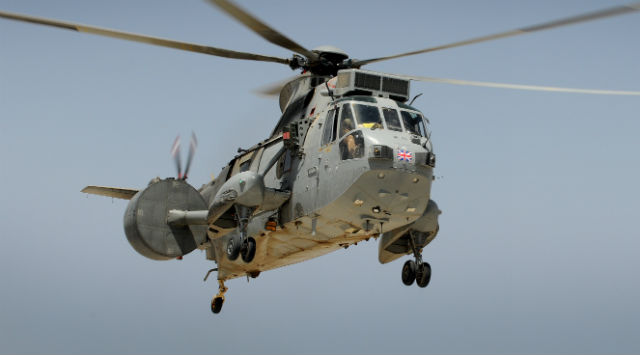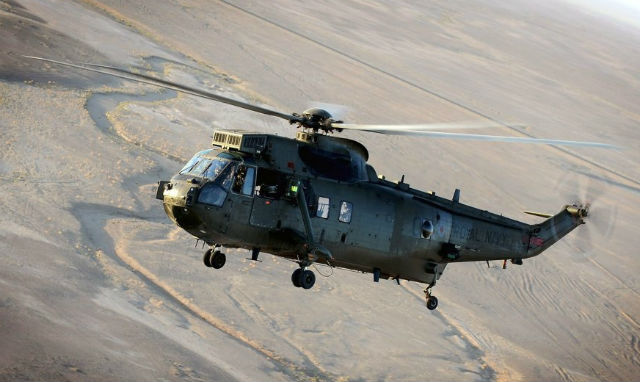The UK Royal Navy will encounter a potential four-year gap in its ability to deliver organic airborne surveillance and control (ASaC) services late this decade, following the retirement in 2016 of its last Westland Sea King helicopters, the government's National Audit Office (NAO) has warned.
Thirteen Sea King 7 ASaC aircraft are operated by the RN's Fleet Air Arm, with the type having provided airborne early warning cover from surface ships and also currently flying overland surveillance missions in support of operations in Afghanistan. Nicknamed "Baggers", the helicopters carry a Thales Searchwater radar.
 |
|---|
Crown Copyright |
The Ministry of Defence's "Crowsnest" effort to buy a replacement capability should enter its assessment phase this year, with current plans calling for some of the RN's upgraded AgustaWestland Merlin HM2 multimission helicopters to be adapted to carry an ASaC equipment fit. Options are believed to include integrating systems currently flown aboard the Sea King, or ordering a new mission system from Lockheed Martin, including active electronically scanned arrays being developed by Northrop Grumman using technology also found on Lockheed's F-35 Joint Strike Fighter.
 |
|---|
Crown Copyright |
In its annual Major Projects Report, published on 10 January, the NAO says the RN also faces the prospect of a two-year gap in its commando helicopter force capability, between the retirement of its Sea King HC4/4+ transports (one picture above) and the full availability of an upgraded fleet of Merlin HC3/3As, which are due to be transferred from Royal Air Force ownership in 2014-15.
"The department is examining alternative means of closing these capability gaps," the government's spending watchdog says. A replacement ASaC system would be available in time to coincide with the operational availability of the RN's first of a possible two 65,000t Queen Elizabeth-class aircraft carriers, according to its four-year estimate.
Meanwhile, the report also reveals that the Merlin HM2 upgrade programme encountered a four-month schedule slip during its 2011-12 study period. This was due to a suspension of about three months of non-operational flight activities involving the type from November 2011, plus new certification demands imposed by the UK Military Aviation Authority, it says.
The modified HM2 should now achieve in-service status in June 2014, and is expected to remain in operational use until 2029.
Source: Flight International



















